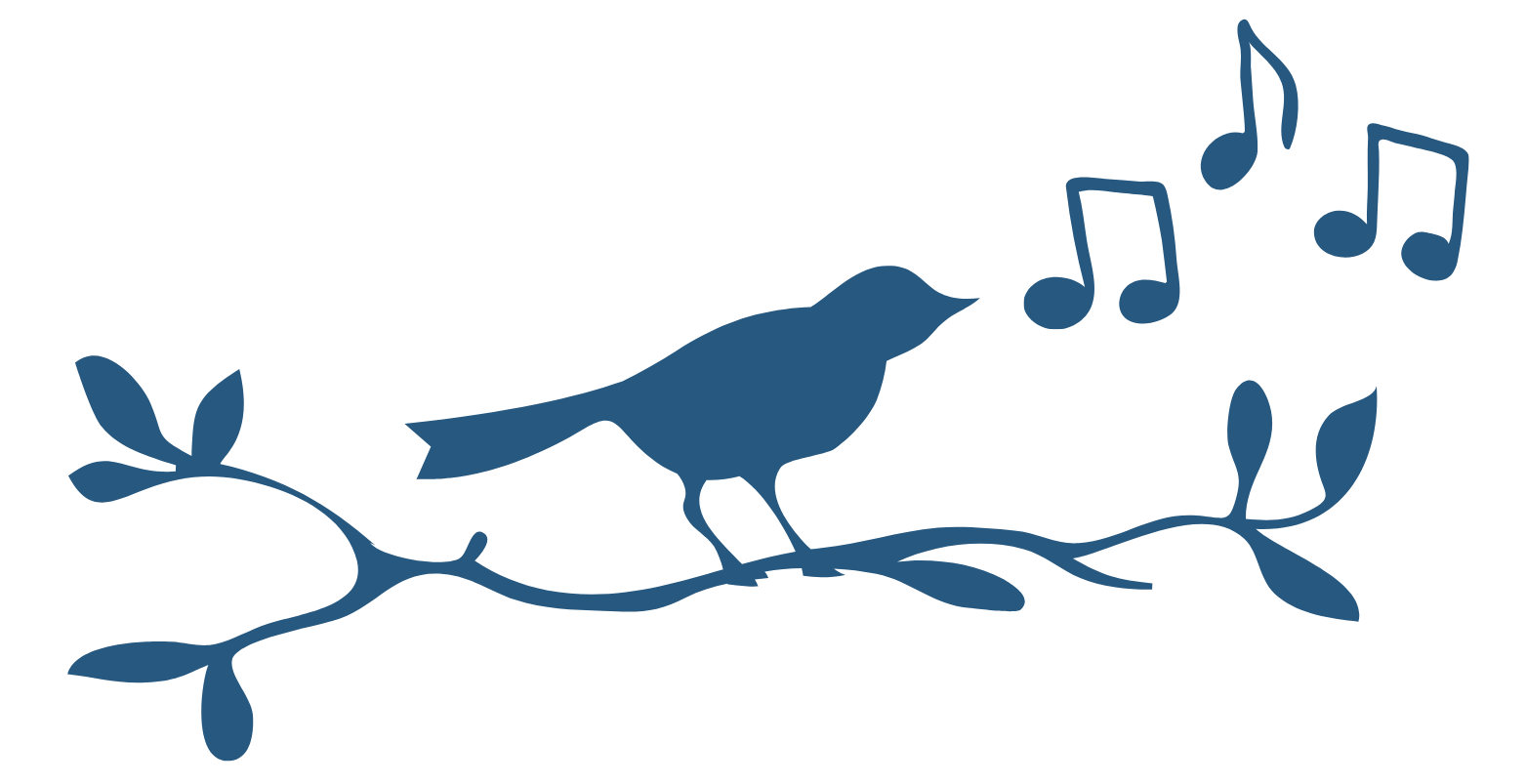How to Sight Read Singing: A Straight-Forward Guide

Learning to read music is hard for some, but learning to sight read and sing at the same time is a whole new challenge. There are a number of things you need to learn first, but it's actually not as hard as unachievable as you might think. Once you've learned the fundamentals, you should be able to sight-sing any music with enough practice. In this article, I will show you how.
In order to sight read singing (vocal) music, you need to learn basic music theory, including scales, solfege, rhythm and notation. Most importantly, you will need to learn to sing intervals so you can pitch any note of the scale when given the base note. It is best to start with the C Major scale.
You can find the four main steps to sight reading vocal music below. If you want to see quick results, I have also provided a quicker way to start sight singing through selectively learning the most simple elements of musical theory.
How to Sight Read Singing
Below is a step-by-step guide to learning how to sight read vocal music. This guide will help you read any type of music, which is something you usually learn in classical singing. If you are looking to learn the bare-minimum, you will find a quicker way to get started further down.
Learn your Scales
A scale is a series of ascending or descending notes, usually within one octave. Different scales are identified based on the intervals between each note of the scale. These intervals are limited to whole steps ('tones') or half steps ('semi-tones').
Learning your scales will help you sing from one note to the next when you sight read music. The scale used in a song will teach you how each note in the song should sound. At the very least, you should learn to sing a major scale and chromatic scale.
You can find an overview and example of these scales (plus more) in this article. Below are a number of scales you might find in music.
- Major Scale
- Chromatic Scale
- Natural Minor ('Minor') Scale
- Harmonic Minor Scale
- Melodic Minor Scale
- Pentatonic Scale
- Blues Scale
These scales determine how you will sing solfege, which I will explain below.
Understand Solfege
Solfege is a system developed hundreds of years ago to teach music students the relationship between different notes. These relationships are the intervals in pitch between the notes.
If you can recognise these intervals in the vocal music you are reading, you will be able to sing the correct notes in relation to the root note (which is given when sight reading vocal music).
You do not have to learn the Solfege system to sight read vocal music, but it is an effective method used to teach people to recognise and sing these intervals. Alternatively, you can skip this section and learn the intervals by their interval names (perfect fifth, etc).
Solfege - Major Scales
In the Solfege system, each note is assigned a unique syllable. Below are the seven syllables (plus the high 'Do') used to name the notes of a major scale, which is repeated for every octave.
In the traditional 'Fixed Do' Solfege system, these names are given to a specific note. 'Do' is always a 'C', 'Re' is a 'D', etc. You can see this illustrated below.

In the 'Moveable Do' system (common in the US), the names are given to a scale degree. This means that the above syllables are assigned to different notes, depending on the key of the song. In any given key, 'Do' is always the tonic, which is the root note of a scale.
For example, 'Do' in the A Major key is an 'A', not a 'C' (like in the Fixed Do system). I have illustrated this system below.
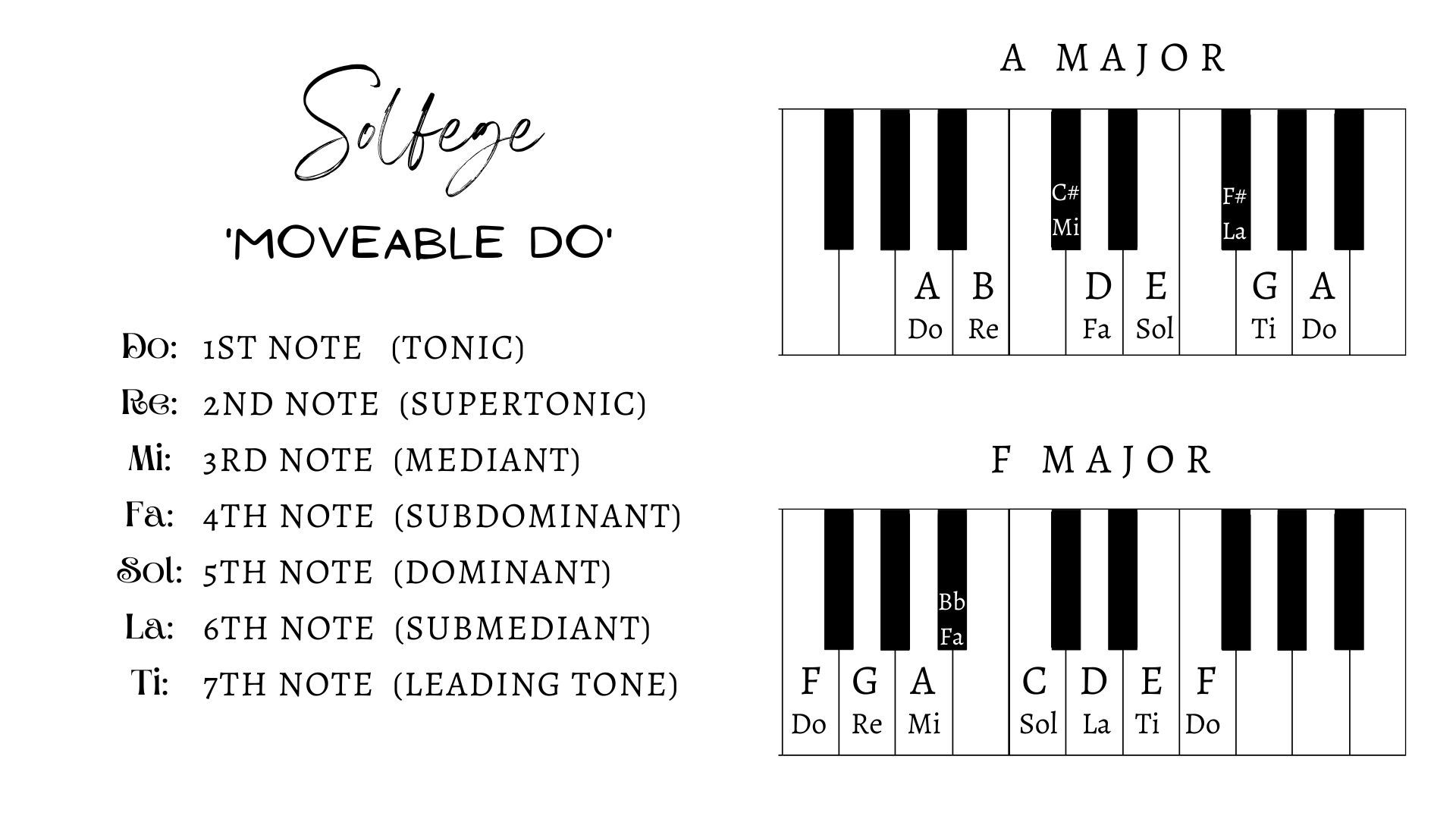
In any major key, the intervals between these syllables will sound the same. For example, the interval between 'Do' and 'Re' is the start of the Happy Birthday song. This could be A and B in the key of A Major, or F and G in F Major.
Minor Scales
As mentioned above, there are many different scales in music. Many of these are minor scales, the most common being the natural minor scale. For these scales, different solfege syllables are used so that you don't become confused with the intervals. Below are the syllables used for each.
Note that in the minor scale, Mi, La and Ti have all be replaced by Me, Le and Te. These notes are all one semitone lower than the corresponding notes of the major scale. For example, Le is one semitone (one half step in pitch) below La. In the C Minor scale, this would be Ab, instead of A.
Most songs are sung in the major or natural minor keys, but there are other variations. I would recommend learning the major and minor solfege intervals using the exercise below.
You will notice some new syllables below, such as 'Fi' in the augmented fourth interval. Once you have learned major and minor intervals, there are very few others to learn such as this.
Exercise: Practice Singing Intervals
Once you have a grasp of what intervals are (whether by the Solfege system, or learning the correct musical names of the scale degrees), you need to memorise these intervals with practice.
Below is the common intervals you will find in music when sight reading (13 in total). Listen to each one and try to copy it. Associating each interval with a song you know will help you to remember (I have given some of my own examples).
Once you think you can recognise and copy these intervals, try singing them randomly from the top of your head. Here is a step-by-step for memorising these intervals.
- Listen to each of the intervals.
- Copy each interval immediately after the recording.
- Try to sing each interval from memory.
- Repeat until you can sing each interval from memory.
Unison (Do - same Do ): Simply sing the same note twice.
Minor Second (Do - Ra): A half step. Think of the theme song from 'Jaws'.
Major Second (Do - Re): Think of the 'Happy Birthday' song.
Minor Third (Do - Me): Think of the classic song 'Greensleeves'.
Major Third (Do - Mi): Think 'Kumbaya' or 'When the Saints Go Marching In'.
Perfect Fourth (Do - Fa): Think of the New Years song 'Auld Lang Syne' or 'Here Comes the Bride'.
Augmented Fourth/Diminished Fifth (Do - Fi / Do - Se): Think of 'Maria' in West Side Story or the theme song from 'The Simpsons'.
Perfect Fifth (Do - Sol): Think of 'Twinkle Twinkle'.
Minor Sixth (Do - Le): Think of the lyrics 'fire' in 'We Are Young' by Fun.
Major Sixth (Do - La): Think of the song 'My Bonnie'.
Minor Seventh (Do - Te): Think of the lyrics 'the little Lord Jesus' in 'Away in a Manger'.
Major Seventh (Do - Ti): Think of 'Take on Me' by A-ha.
Octave (Do - high Do): Think of 'Somewhere Over the Rainbow'.
Learn to Read Notation and Rhythm
Once you have mastered intervals, you need to be able to recognise intervals within written music. In order to read written music, you need to understand what each symbol means. Below is a brief overview.
Note Names
It is important to be able to recognise different notes on the staff (also known as 'stave'). Most vocal music is written in the Treble Clef, but some male parts may be written in Bass Clef.
Both of these are made up of five lines and four spaces, each representing a different note. Acronyms, such as those below, make it easier to remember the note names on each staff.
- Treble Lines: Every Good Boy Deserves Fruit
- Treble Spaces: F-A-C-E (Face!)
- Bass Lines: Good Boys Deserve Fruit Always
- Bass Spaces: All Cows Eat Grass
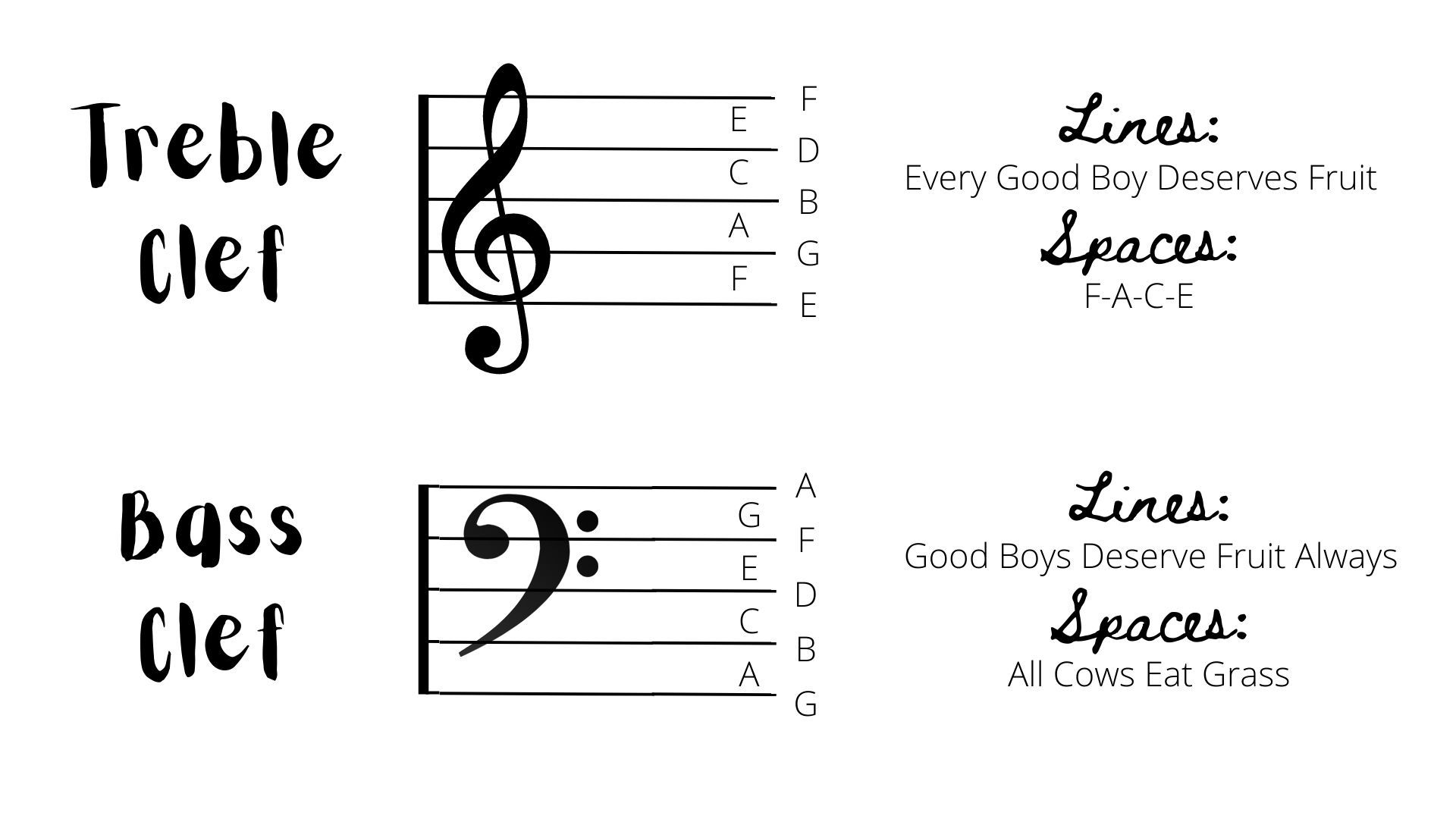
Each step on the staff, from line to space to line, etc., is a step higher or lower in a scale, or a step in the Solfege syllables. By knowing the names of the notes, you will be able to work out what each note sounds like using a piano or other instrument.
The Key of the Song
The key of the song is indicated after the clef. This is denoted as a number of sharps, flats or the lack of both. For example, if there are two sharps, the key is D Major, as seen in the image below.
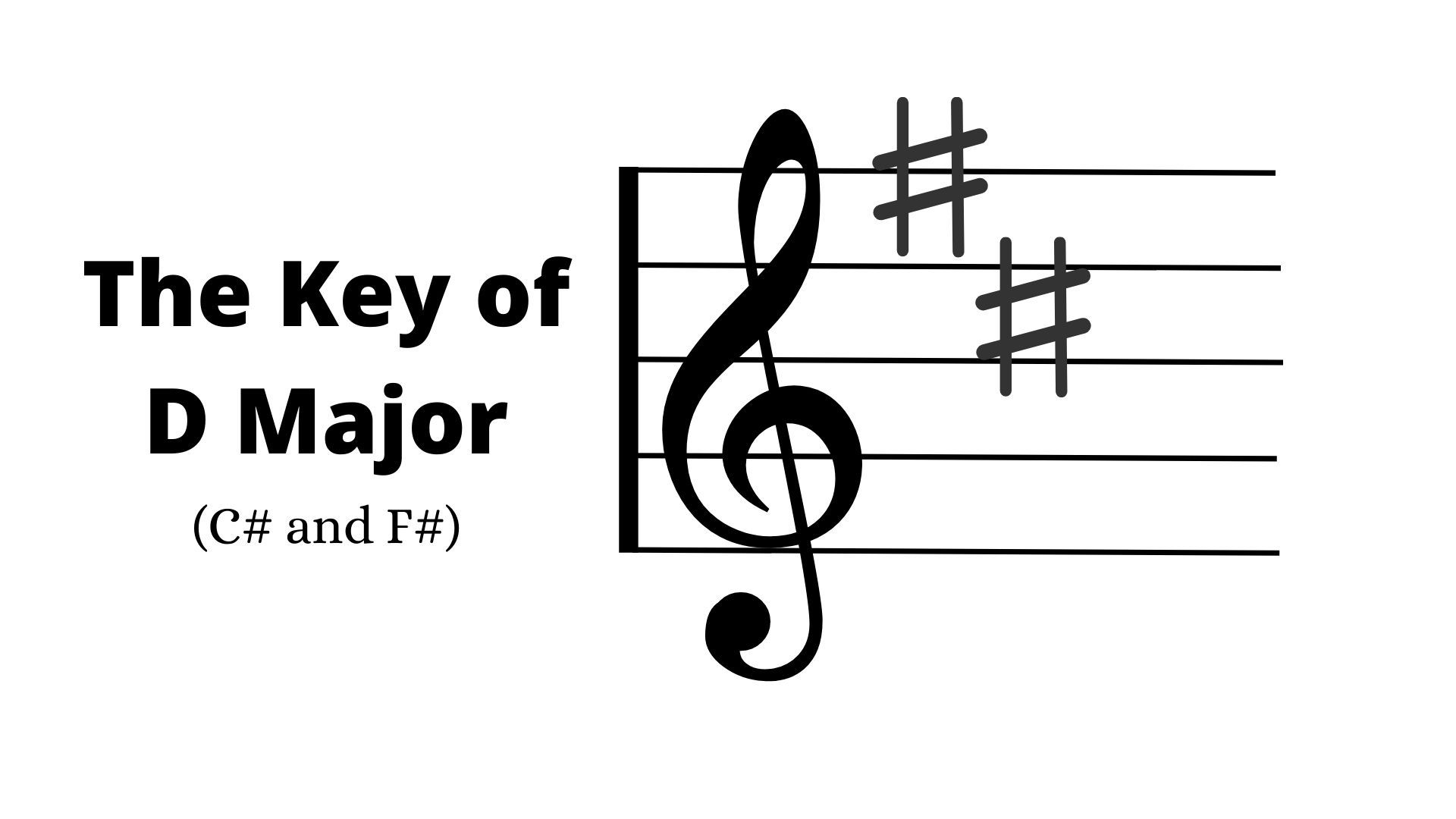
Knowing the key of the song will allow you to determine which note will be your root note ('Do' in Moveable Do Solfege). Using the example of D Major, your root note is 'D'. Similarly, in the key of F Minor, your root note is 'F'.
Once you have found your root note on the staff, you can work out which notes correspond to the different solfege syllables we discussed above.
Below is an example using the D Major key.
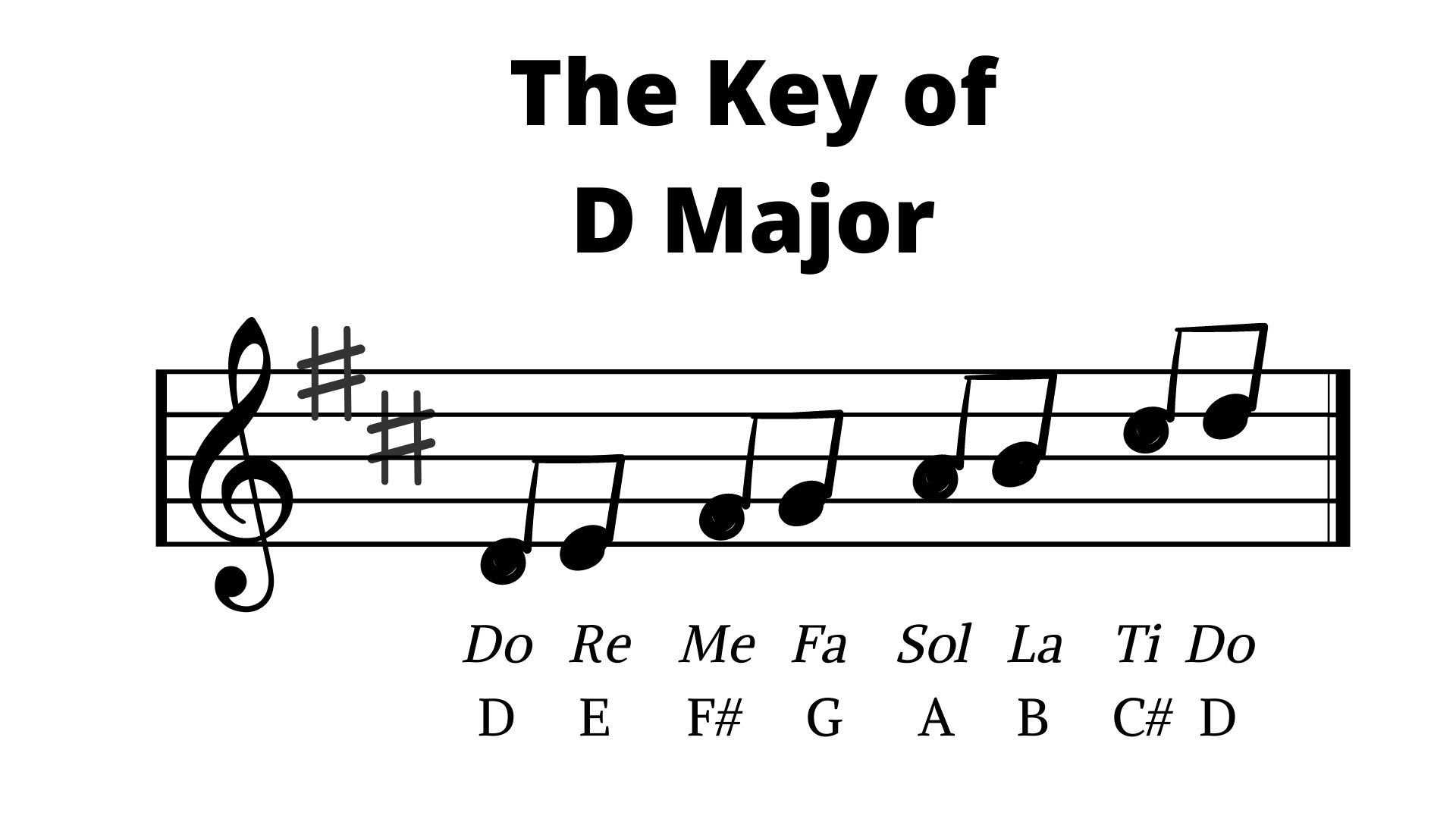
This will also help you understand how each note should sound, based on the sound of each interval between the notes (for example, you should remember how to sing Do-Me, Do-Sol, etc.).
Rhythm
The rhythm of the song will tell you how long to sing a note or when to pause. Learning rhythm is essential to keeping in time with the song, particularly if you are being accompanied by another instrument (or accompanying yourself on piano).

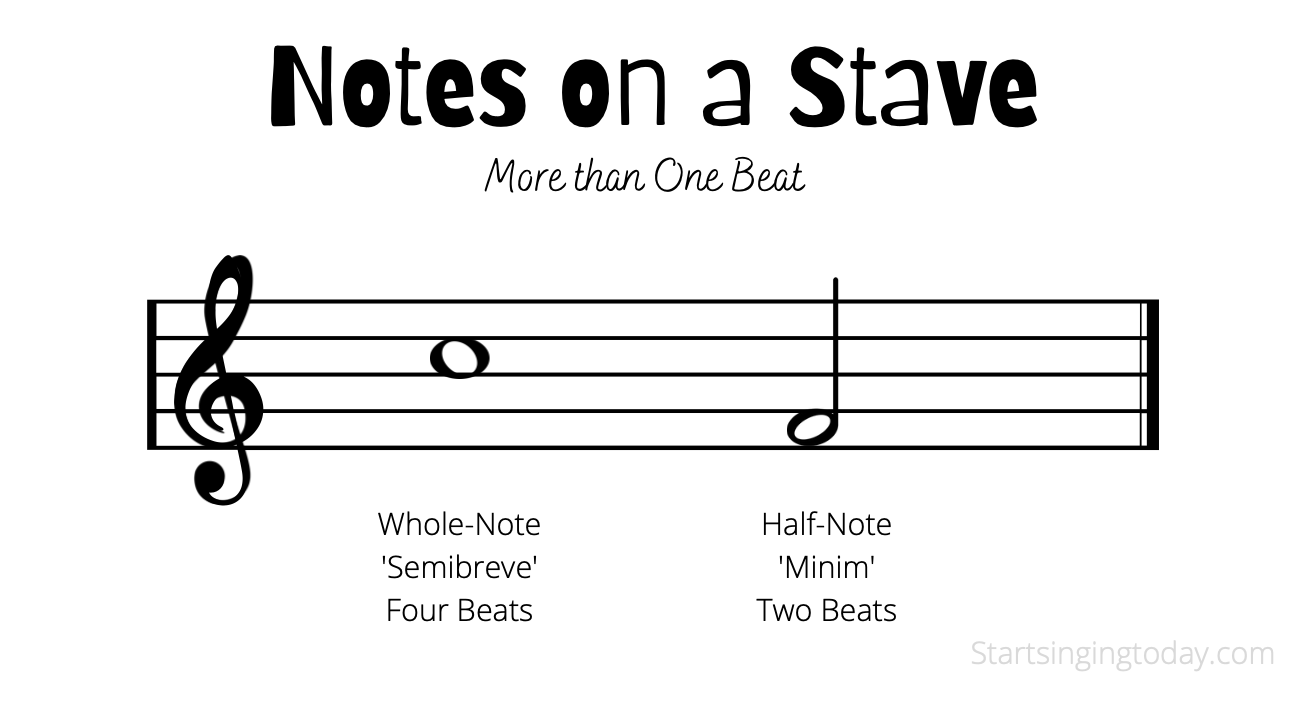
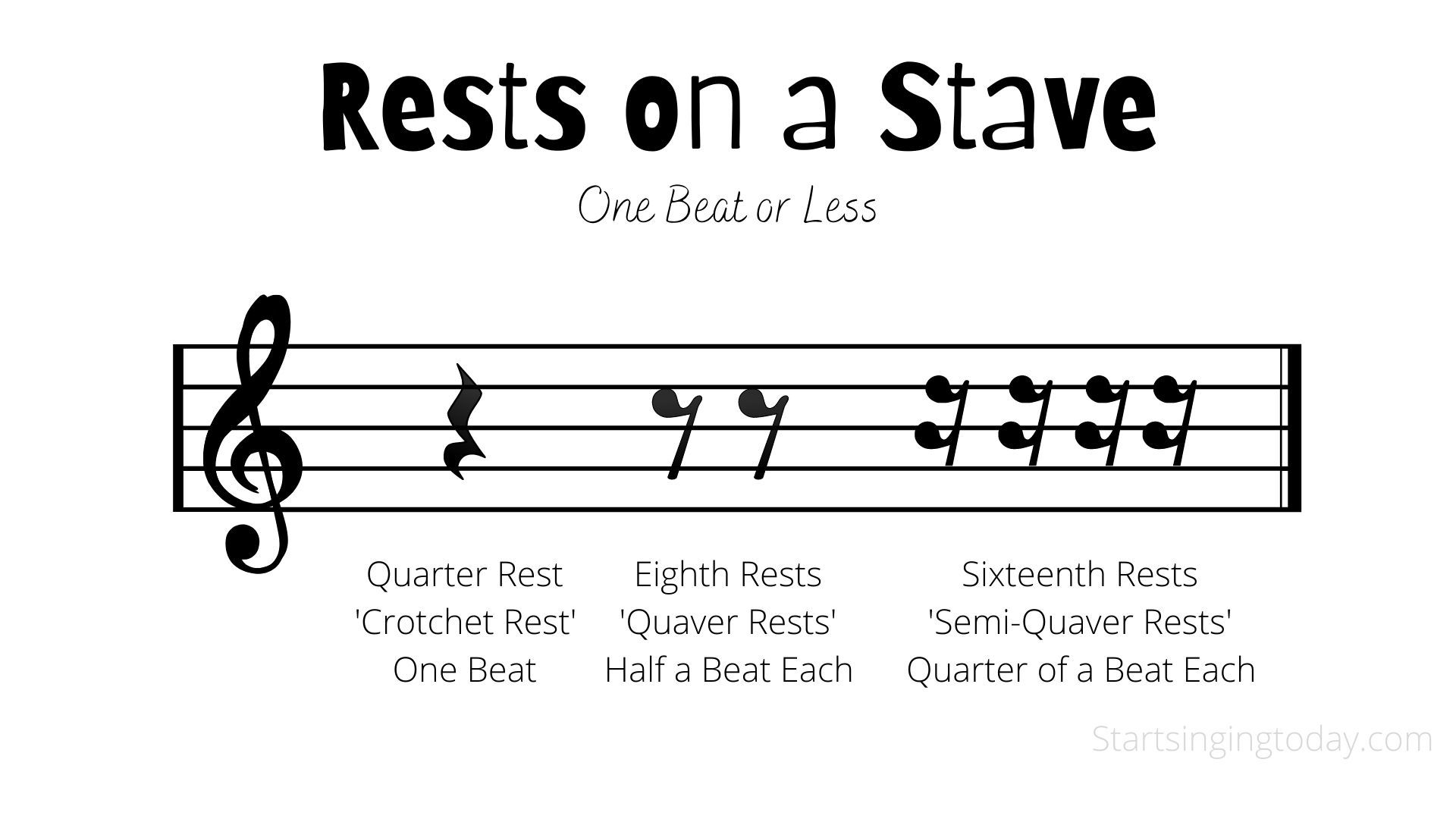

There are is also something known as a time signature that tell you how many beats are in the bar. This is shown as a fraction at the beginning of the staff (next to the clef).
Below are a few example, but the most common time signature is '4/4', or 'common time'. In this time signature, there are four beats per bar (the top number), and these beats are equal to a quarter-note in length (bottom number).
To use another common example, the time signature '6/8' has six beats per bar, but these beats are an eighth-note in length. Therefore, you can fit three crotchets, six quavers, 12 semiquavers, etc. per bar.
Putting it All Together
Once you have a basic understanding of the above, you should be able to sight-read music. Here is a basic overview of what these elements will tell you.
- The clef, key signature and where the note is on the staff (which line or space) will tell you which note you need to sing.
- The time signature and rhythm will tell you how fast to sing each note.
- The distance between notes will tell you how each note sounds in relation to the other (you can start by comparing the interval to your root note, 'Do'.
Usually you will be given the root note (or starting note) of your song when sight-singing. Once you have this, and have studies the staff and relationship between each note, you should know what each note sounds like.
Once you have attempted to sing the music by yourself, you can check using a piano.
How to Sight Read Singing Quickly
You can sight read with minimal training. Although this limits you to very basic songs, it is a great start. You can then continue to learn more complex rhythms, key signatures, time signatures and intervals.
In saying that, below is the most basic music theory that you should learn, helping you learn sight-reading quickly.
- C Major scale (no sharps or flats, as seen in the image below)
- 4/4 timing (also known as 'common time')
- Sing steady quavers (four steady beats/notes per bar in common time)
- Major intervals (unison, major 2nd, major 3rd, perfect 4th, perfect 5th, major 6th, major 7th and an octave)
- Notes of the treble staff for females or those of the bass clef for males (this depends on your vocal range)
To help with this process, below is an image that shows all the notes of the C Major scale with their corresponding Solfege syllables and where they sit on the treble staff. Starting on C (Do), you should be able to sing through the whole scale and sing different intervals.

